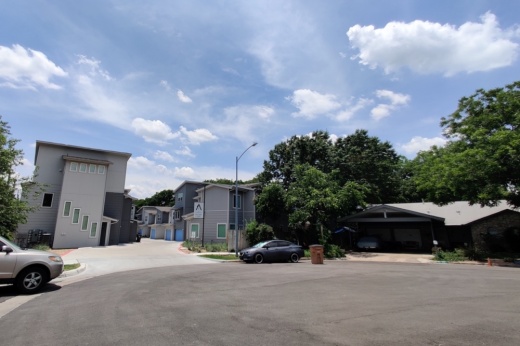The setup
In Texas, affordable housing is largely based around developments that set aside units for residents earning a certain percentage of the local median family income, or MFI. Austin's MFI has risen quickly in recent years and now sits at $122,300 for a family of four.
The income-based system is different than inclusionary zoning practices commonly found throughout the rest of the country in which policymakers can mandate affordable units. Instead, cities like Austin can only offer building trade-offs to entice—but not require—developers to include income-restricted units in their plans in exchange for things like greater height or a larger building footprint.
Austin has established many such incentives to promote affordable housing alongside market-rate and luxury units that apply citywide or in specific areas. Austin's development incentives have seen varying success in creating more spaces for lower-income earners.
In what they bill as an attempt to boost such programs, two City Council members drafted proposals that they said could encourage more affordable living spaces in different types of development going forward. The changes will be considered by council on June 8.
Council Member Vanessa Fuentes is seeking to expand Austin's existing Affordability Unlocked development bonus program that was created by city leaders back in 2019. Separately, Council Member Ryan Alter is proposing a brand-new bonus program aimed specifically at ownership housing within existing single-family areas.
The details
Affordability Unlocked provides waivers for a slate of development standards, allowing denser or taller projects if a significant number of units are affordable based on income.
That program features two tiers with differences based on the share of affordable units included, what level of income they're available at and bedroom counts in those spaces. Fuentes' update, if approved, would add a new median tier that requires less affordable housing than those layers but more than some of Austin's other existing bonuses call for.

“By creating affordable housing incentives without the use of city subsidies, we’re taking a proactive stance in addressing housing market failures, saving taxpayer money, and implementing solutions that bring us closer to a more affordable and accessible Austin," Fuentes said in a statement.
Fuentes isn't calling for an exact percentage of a building's total units to be used for the program's new tier; city planners would propose a figure as they draft the program over the coming months. The parameters laid out by Fuentes would mean at least 10% and up to 50% of units in participating projects would have to be income-restricted to earn their height bump.
Affordability Unlocked was designed for both rental projects like apartments as well as those providing long-term ownership. To promote more affordable for-sale projects, Council Member Ryan Alter is forwarding a separate plan through a new potential bonus program aimed only at that type of housing within residential areas. The proposal stems from a concept Alter featured in his campaign last year.
While many affordable projects rely on city or state support, such as bond funding and tax credits, to get across the finish line, Alter said in a June 1 interview that he's looking to get something like Affordability Unlocked in place to make builders want to add more income-restricted spaces while "responsibly" giving them more flexibility for their development plans.
“Really what we’re trying to do is have a developer say to themselves, ‘I could build the really expensive single mansion or two-unit development ... or I could build four units, maybe five, six if it’s a larger lot, and have some of those be affordable and still make the same return.' That it’s equally attractive," Alter said. "Because if we don’t make it equally attractive, they’re not going to do it."
While some other incentive programs center around total housing units, Alter said this program would mainly count bedrooms to incentivize what he called the working-class, family housing with two or more bedrooms that's less common in the local market today.
“In terms of home purchase, we don’t have a lot of that in our housing market. And so how can we create a more working-class product that can be done without subsidy?” he said.
The plan is headed for an initial council vote and would still need months of staff review before a finalized program is up for approval. Firm details on building entitlements and home pricing would come later, but for now Alter said he hopes affordable homes created through the program would be available in the high $200,000s to low $400,000s.
A proposal from Mayor Kirk Watson would also ask city staffers to consider how the program could help communities that have been historically disenfranchised from the chance at homeownership, potentially through initiatives that can offer better access to credit.





